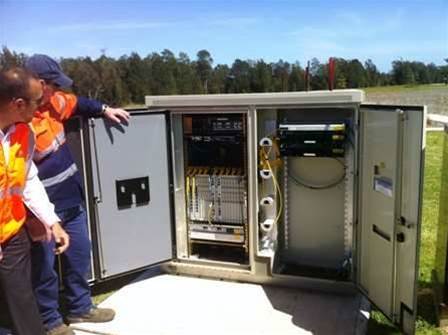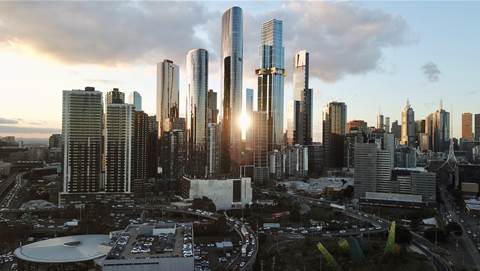NBN Co is starting to abandon future FTTN deployments in favour of newer fibre-to-the-curb (FTTC) technology.

Updates of its online maps - captured by iTnews as part of a full reconstruction of the company’s three-year plan - show how FTTC is to be used outside of the Optus HFC footprint for the first time.
The scale of the proposed FTTC rollout points to a bullish outlook for the technology in NBN Co's multi-technology mix.
A week ago, NBN Co put at least 470 cities, suburbs, and towns in six states and territories on the FTTC rollout schedule.
Most are in NSW (150) and Victoria (132), and are concentrated in metropolitan areas, although there is some planned FTTC presence in regional Australia.
While most focus to date has been on the 450,000 or so premises in the Optus HFC footprint that are first in line for FTTC, NBN Co has always said it would target at least 700,000 premises.
Where the remaining 250,000 premises would come from was unknown.
It can now be revealed that a significant number of FTTC connections will occur in areas that - up until now - were slated to receive FTTN.
However, it is difficult to scope with a high degree of certainty exactly how many premises will get this upgrade.
It is at least 83,700 - which is the number of premises in FTTN areas that appear to have been wholly converted to FTTC.
The total number is far greater, but somewhat difficult to determine, for several reasons.
First, many former FTTN areas will now receive a mix of FTTC and FTTN. What the split of FTTC and FTTN premises in each suburb or city can’t accurately be determined, because NBN Co has never published data to that level of granular detail.
Second, new rollout areas have been added to NBN Co's construction schedule and are to be given FTTC or a mix of FTTC/N. The number of premises in these areas is unknown.
And third, the quantum of NBN Co’s shift to FTTC is hard to determine because there is only one weeks' worth of data and it is presently incomplete.
For example, while the full Optus HFC footprint will receive FTTC, it is not yet all on the map. Many Optus HFC suburbs remain listed as being destined to receive HFC rather than FTTC; iTnews understands this is an error related to incomplete data, and that there is no change in NBN Co’s commitment to put the entire Optus HFC footprint on FTTC.
Counting the cost effectiveness
While FTTN has enabled NBN Co to scale the reach of its network quickly and at low cost, it is seen in some quarters as unfavourable owing to the speeds that can be achieved, especially for those located some distance from the street cabinet.
FTTC, by contrast, has been favourably received as an NBN access technology because it increases the amount of fibre - and decreases the length of copper - used to service the connection.
FTTC is also known as fibre-to-the-distribution point (FTTdp) or fibre-to-the-driveway.
The extent to which FTTC is able to replace FTTN will come down to the cost-per-premises to deploy it.
NBN Co claimed commercial in-confidence on these costs in recent responses to a Senate committee.
However, the fact the company is now converting planned FTTN areas in part or in full over to FTTC is likely to reignite interest in just how well the two access technologies compare when it comes to their respective cost effectiveness.
It is early days, and there are few patterns in the way FTTC is being allocated outside the Optus HFC footprint.
What is clear is that FTTN areas that were delayed in a pre-Christmas update to NBN Co’s maps had a blessing in disguise, as these areas mostly now appear converted - at last partially - over to FTTC.
That could mean future delays in the FTTN rollout may also be good news, providing a chance for NBN Co to change access technology.
Given there are still areas on the map that have been promised FTTN services in 2019 or 2020, there is an opportunity for NBN Co to convert more over to FTTC once the technology is proven and the company is able to generate some economies of scale from the build.
NBN Co said in a statement last week that the first area to go live with FTTC "will be Coburg North in Melbourne", where "trial services with retailers" are expected to be offered "in the second half of 2017".
"We are expecting to launch commercial services for FTTC in the first half of 2018 at which point NBN Co is expecting to have 100,000 homes and businesses ready to connect to the service," the company said.
NBN Co also said that FTTC offered users a cheaper upgrade path to full FTTP in future, should they desire an end-to-end fibre connection.



















.png&h=141&w=208&c=1&s=1)

